Choosing the Right Arrow
Arrows meeting your crossbow specification are critical to performance
Advertisement
When the moment of truth arrives in the field after stalking into range of your quarry and are ready to squeeze the trigger, you want complete confidence in your equipment. If your equipment is not reliable, calibrated and setup correctly for your shooting needs you are putting yourself at a disadvantages before the shot is taken. Just like compound and traditional bows, crossbow arrow selection is critical to its performance. The right arrow means harnessing the most energy possible from the string ensuring proper flight right off the rail. The wrong arrow means less than optimal performance, and worse, is dangerous. But what goes into selecting the right arrow?
Building any arrow is a balance of speed, penetration and kinetic energy (KE). Different uses and applications require different arrows. Hunters want an arrow that provides deep penetration and acceptable KE, thus a heavier arrow is a likely candidate. On the other hand, target shooters will prefer the lightest arrow possible providing the flattest flight trajectory. And then of course there are those, like me, who want both. Whichever application you are using, there five main factors for arrow selection: nock, tip, length, spine and total weight. Regardless of crossbow manufacturer brand, reading their specification is the first step. For example, the Mission MXB crossbow series owner’s manual states the following:
Advertisement
- Half-moon aluminum nocks
- 1.35 inches of clearance between the inside of the nock to the beginning of the vane
- A total minimum weight of 375 grains (including tip)
- 22-24 inches in length
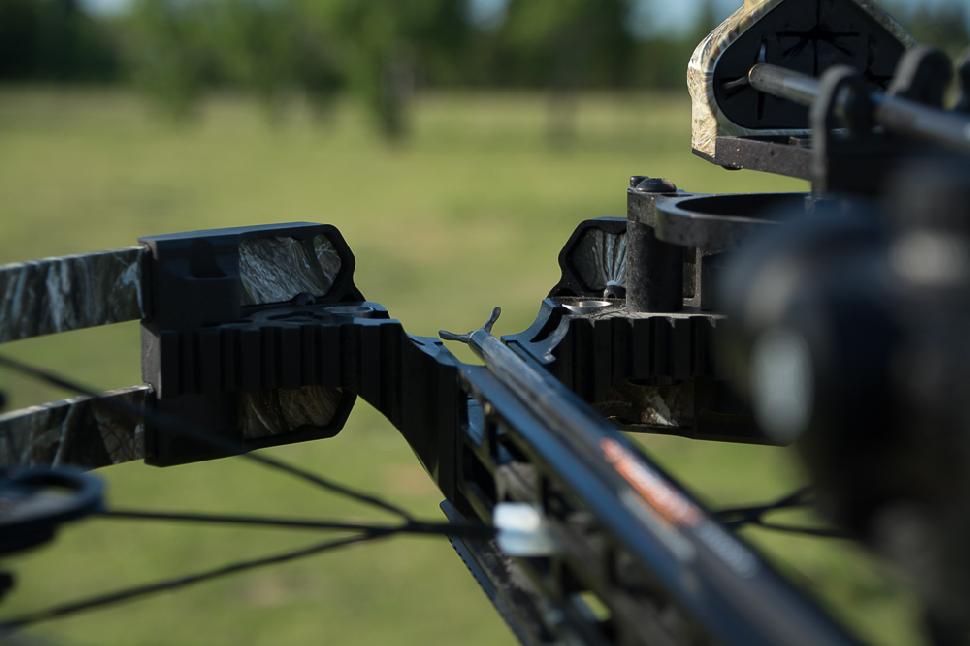
Nocks
Crossbow nocks are made from plastic or aluminum and are inserted into the back of the arrow shaft. Nocks ensure a good connection between the arrow and the string from maximum energy transfer. The types of nock shapes are: half-moon and flat. The half-moon has a groove that ensures the fletching’s are placed correctly along the rail and the arrow is correctly rotated in place. Half-moon design helps to prevent the string from slipping off, which would result in a dry-fire. When placing the arrow along the rail, you must ensure the string and arrow are in contact because nocks are designed to cradle the string and help transfer energy, not absorb a blunt impact from the string. Crossbow arrow nocks can also illuminate a small LED light when fired.
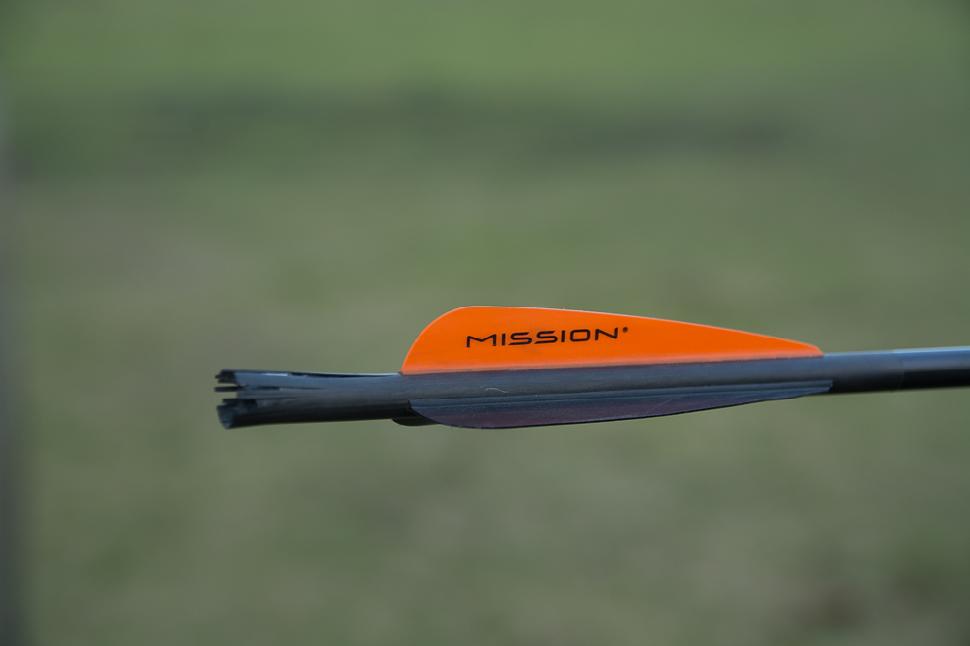
Arrow damage will occur if their is not contact with the string upon firing.
Tips
Choosing a tip is relatively straight forward. There are two decisions to make: style and weight. Broad heads, either a mechanical or fixed, are used for hunting and quick ethical kills. Rubber blunts are used for stump shooting (practicing) and small game hunting. Field tips are used for target practice. Common weights are 100gr, 125gr and 150gr. Tip weight affect two things: total arrow weight and dynamic spine.
Advertisement
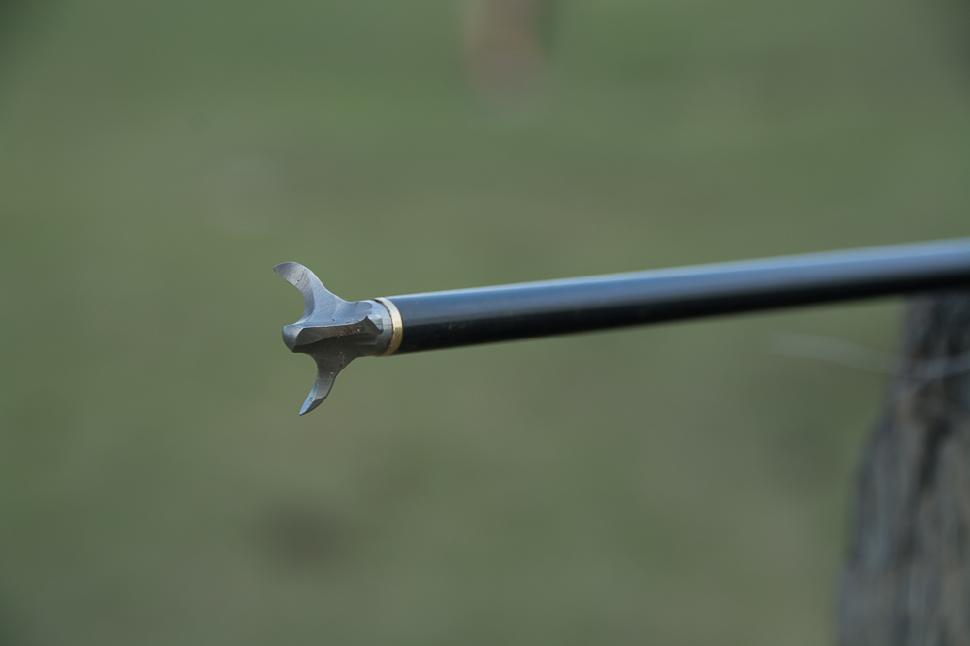
Small game heads are advantageous when missing small game to keep your arrow from going astray.
Spine
Arrow spine refers to the arrow’s degree of stiffness, as in how much the arrow resists bending. There are two types of spine: dynamic and static. Static spine is measured by supporting the arrow at both ends and hanging a 2 lbs weight from the middle and measuring. If it bends 0.5 of an inch, it will be labelled a ‘500’ spine arrow. Material type, construction style and inside diameter all contribute to static spine. The stiffer the arrow, the less it bends and the smaller the spine number like 200 stand for a 0.2 inch bend.
Dynamic spine is more complicated and is affected by tip weight, arrow length and draw weight. Dynamic spine is defined as how much the arrow oscillates back and forth when fired before it stabilizes in flight. A heavier tip requires more force to start the arrow in motion, therefore the arrow will bend more to absorb the energy transfer before initiating movement, thus has weaker dynamic spine. Longer arrow length also weakens dynamic spine.
Length
The majority of crossbow arrows are 16-24 inches long, with the average being 20. Besides dynamic spine, length affects total weight because arrows are measured in grains per inch (GPI), so the longer the arrow, the more grains are added. The arrow also must be long enough so the nock touches the string and the tip is free from interface at the other end of the rail.
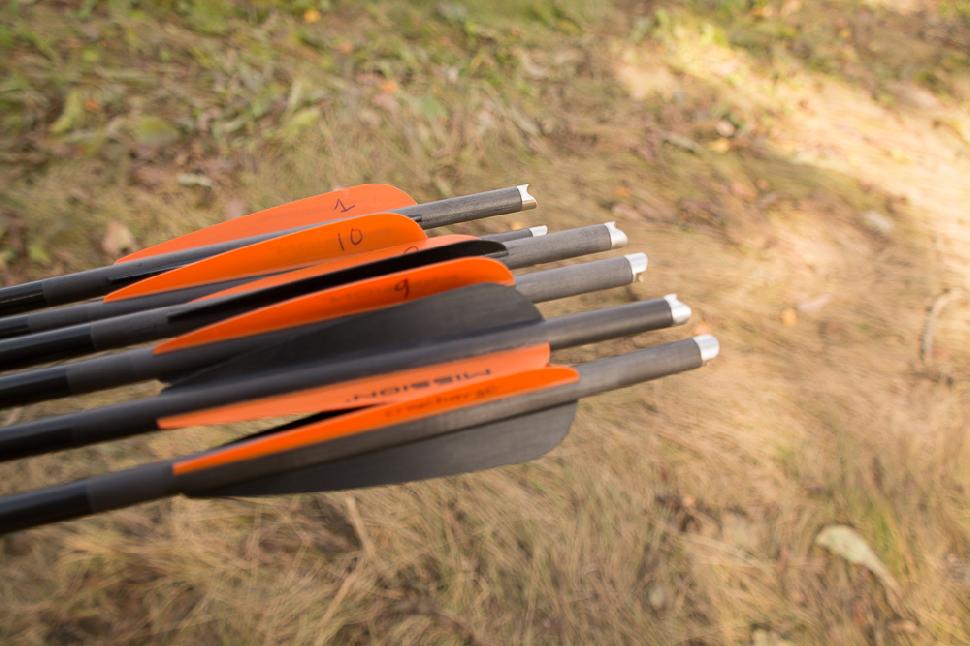
Purchase a dozen arrows once you have found the right arrow.
Total Weight
Total weight is self-explanatory, weigh the arrow once it’s ready to fire. The heavier the arrow the more momentum, penetration and KE it will have, but the quicker it’ll drop. Lighter arrows will have a flatter trajectory but not as much penetration. You will want to a balance.

This images shows the point of impact (hairs cut) of passthrough shot on a deer. The mark in the snow towards the top is where the arrow finally stopped – more than enough penetration.
My Hunting Arrows
For example, my mission arrows, which meet the minimum MXB requirements, are composed of the following components:
- 22-inch carbon fibre shaft (11.61 GPI) [22 x 11.61 = 255.42 grains]
- Three four-inch plastic vanes [3 x 10.8 = 32.6 grains]
- One aluminum insert [14.2 grains]
- One aluminum half-moon nock [13.9 grains]
- One arrow tip [150 grains]
My arrow’s total weight is 466.12 grains, well above the minimum of 375 listed above. Arrow shaft is responsible for over 60% of my arrows weight, so there is high correlation between arrow static spine (construction materials) and total arrow weight. A light arrow will naturally have less construction material so it is often a warning in the owner’s manual: “do not fire an arrow lighter than X.”
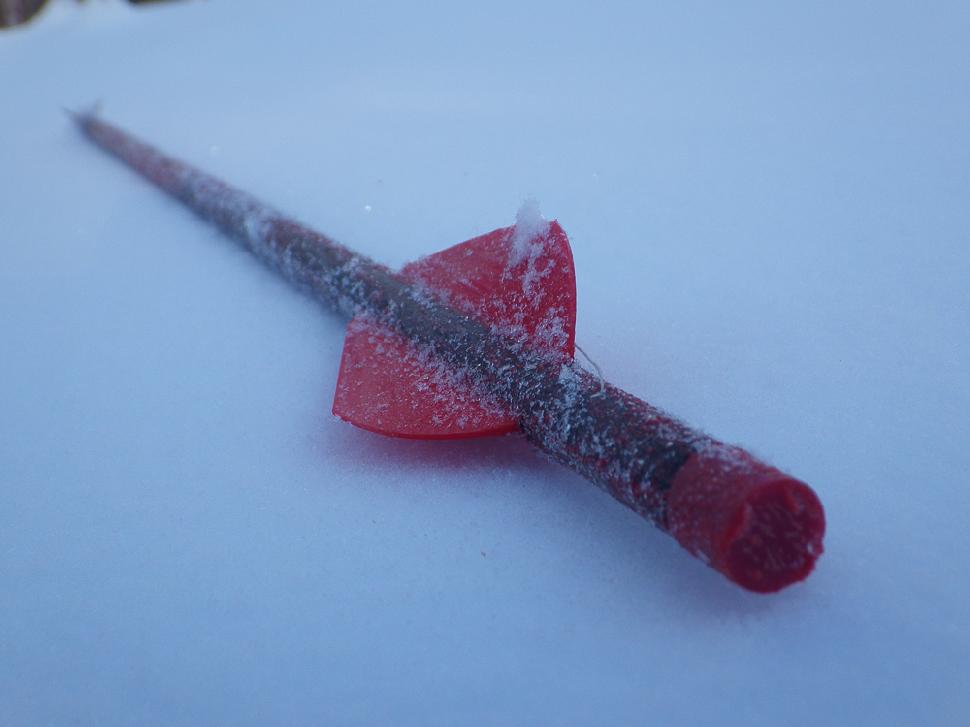
The arrow from the above shot. Still in great condition covered in blood – exactly what you want for a quick kill.
Check the Chart
Engineers and manufacturers have arrow spine selection charts to make things easier and these are found on every package of arrows that can be purchased. Whatever configuration you choose of tip, nock , GPI and length, three vanes per arrow are recommended, with a straight pattern. All that combines creates the total weight and KE can then be calculated from draw weight to ensure your arrow is right for your needs.
